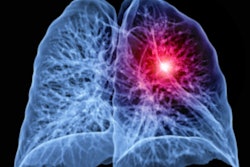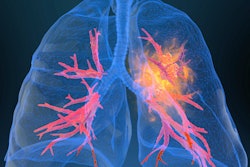
Individuals with higher education are most likely to have appropriate follow-up of incidental findings after CT lung cancer screening, according to a study published online January 10 in the Journal of the American College of Radiology.
A team led by Suraj Kapoor of Vanderbilt University sought to detect patient factors that were linked to appropriate follow-up of clinically significant incidental findings, defined as an unexpected abnormality identified during a radiologic examination that is performed for an unrelated reason.
The researchers reviewed charts of 1,458 patients who had been prospectively enrolled in CT lung screening from January 2015 to October 2018. They noted demographic factors such as age, gender, race, education level, and insurance status, with individuals stratified by education level as either a high school graduate or less, or education past high school.
The team identified 138 individuals (or 9% the total) who had actionable incidental findings. The overall rate of appropriate follow-up was 82%. Renal lesions (16%) were the most common incidental findings, followed by dilated thoracic aorta (10%), and pulmonary fibrosis (10%).
Further analysis found that education level emerged as a variable that influenced appropriate follow-up. Individuals with more than a high school education were strongly linked to having appropriate follow-up after controlling for other demographic variables (p = 0.02). Lower education was linked to an increased likelihood of not receiving proper follow-up care. Differences in other factors -- such as race, gender, insurance status, and smoking status -- did not achieve statistical significance.
| Factors that impact appropriate follow-up of CT lung exams | |||
| Appropriate follow-up | Lack of appropriate follow-up | p-value | |
| Education level more than high school | 64.6% | 40.0% | 0.026 |
| Caucasian race | 83.6% | 92.0% | 0.369 |
| Medicare insurance | 71.6% | 68.0% | 0.814 |
| Age | 66.6% | 63.9% | 0.053 |
| Current smoker | 62.9% | 72.0% | 0.4892 |
| Male gender | 57.8% | 56% | 1.000 |
Kapoor and colleagues noted that education level may serve as a surrogate for low socioeconomic status or healthcare access, or as an indication of health literacy. Previous investigations have demonstrated that low health literacy is common and a probable obstacle to appropriate education in the lung cancer screening population. What's more, much lung cancer screening educational material is written at a reading level higher than suggested by American Medical Association recommendations.
The results of this study are consistent with what has been observed in other screening modalities: Cervical cancer screening found patient education level and health literacy were significantly predictive for appropriate follow-up of abnormal results, with odds ratios ranging from 1.50 to 2.25.
The researchers noted possible shortcomings of the study, including the fact that the definition of actional findings that they used may be less sensitive than other definitions, but they explained that this was a direct reflection of their clinical practice.
Another possible study limitation is the one-year time interval chosen as an appropriate follow-up period, but no consensus statement or established guidelines on the appropriate follow-up of incidental findings have been promulgated, the authors noted.
In addition, the researchers did not regard findings of emphysema and coronary artery calcification to be actionable incidental findings, for such findings are to be expected in the lung cancer screening population. They noted, however, that the exclusion of these findings as actionable may be a limitation of the study. The appropriate method of quantifying coronary artery calcification on low-dose CT (LDCT) scans, and whether an ideal threshold can be used as a trigger for additional evaluation, remain to be determined.
Moving forward, the authors recommended standardized guidelines and reporting recommendations for clinically significant incidental findings on LDCT scans for lung cancer screening in the U.S.




















